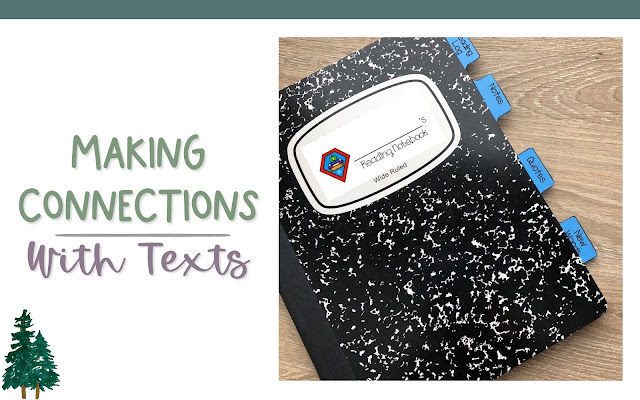Making Connections with the Text
Hey y'all! Read any good books lately? Why did you think it was good? Could you connect to it in some way? Readers come back wanting to read more books when they make connections to the text and relate to what the author is saying. If that's what we want for all of our students--to get them to love reading--how can we show them to recognize the connections?First, we have to model making connections. This happens during read alouds when your class is completely engrossed in the story. You may have students say things, "Oh yeah, like that one time when..." or you may have to model it yourself. Either way, we want our students THINKING about what they're reading, not just following along passively.
Second, students need a place to write about or illustrate those connections. We can talk about them all day long, but writing about it solidifies and strengthens students' thinking. A great place to do this is in a reader's notebook.
Notes are for thoughts, feelings, and connections to the text. Quotes, obviously, are for quotes in the text that struck us or stuck with us. And the "new words" section is for writing down words that we didn't know AND the definition, preferably in students' own words.
Now, this all can be done in bullet journal style (can you say, "pretty pens?") or you could add your own pages to help your students keep their thoughts straight. We use the Any (Chapter) Book Book Study pages to keep our thoughts organized and to add some pizazz to our notebooks. If you're not familiar with it, you can check it out here or here.
Reading workshop is a great time to use these notebooks, or as an alternative to keeping a reading log for homework. So...grab your free tabs for your notebooks here and let the learning begin!
Thanks for stopping by! Be sure to follow me on TPT for the latest updates, ideas, and resources. Have a great week and I'll talk to you soon.
Stay cozy,
Stay cozy,




No comments
Post a Comment